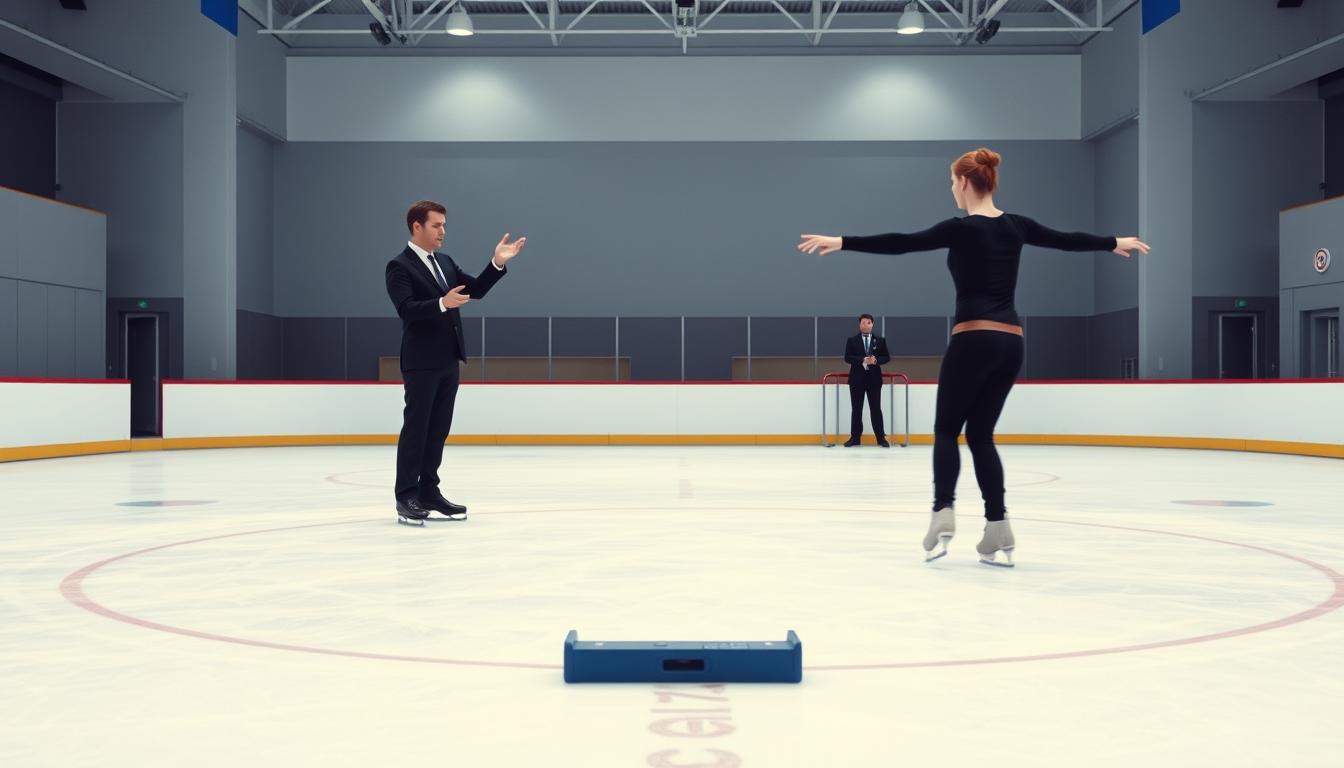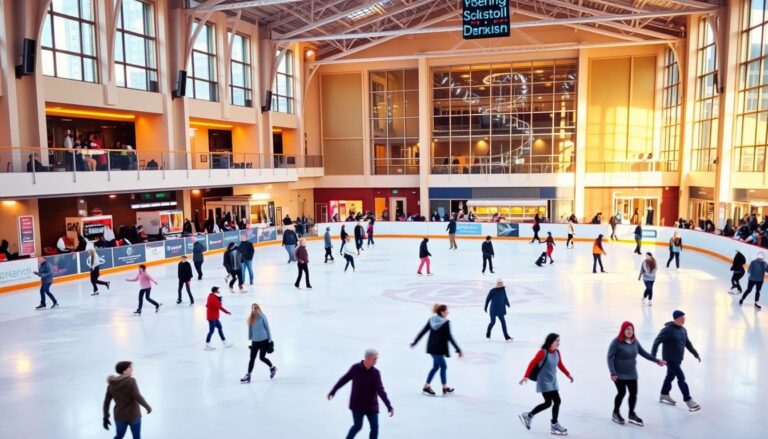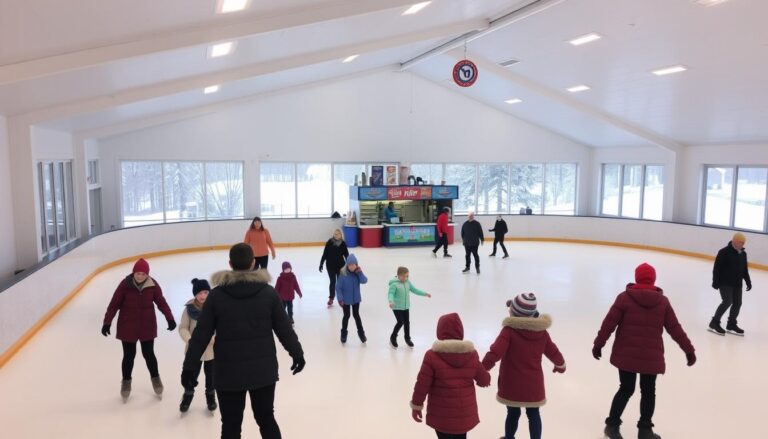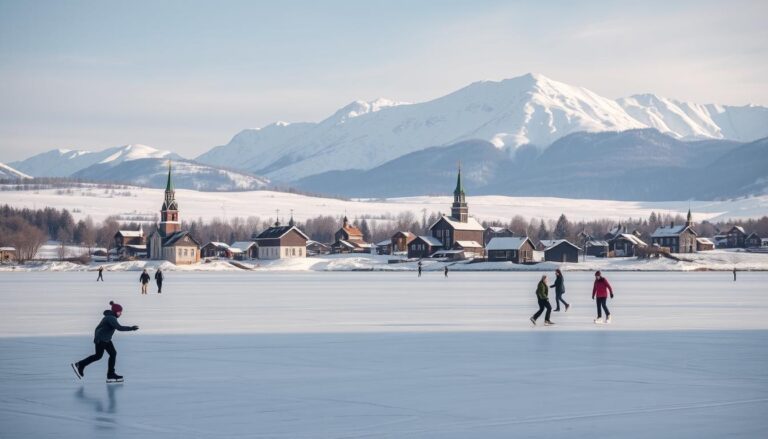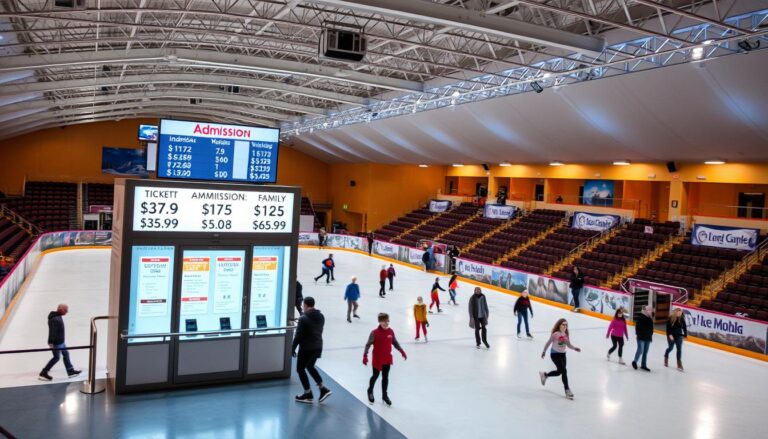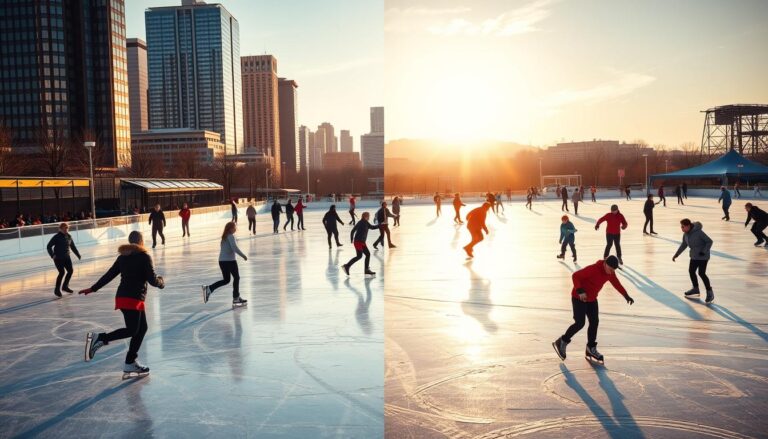The Reason Backflips Are Banned in Figure Skating: A Competitive Ice Skating Mystery
Imagine a world where gravity is your playground and ice is a canvas for athletic expression. In competitive figure skating, some moves are strictly forbidden. Backflips are the most controversial, banned by strict ice skating rules.
Professional figure skaters face a complex world of technical restrictions. Backflips, despite their stunning look, are a safety risk. This is why professional organizations have banned them through strict rules.
To understand why backflips are banned, we must explore competitive skating deeply. These aerial moves might look amazing, but they’re a big safety risk. They challenge athlete safety and competition standards.
The International Skating Union (ISU) has set guidelines to protect skaters while keeping the sport’s art and technique alive. Backflips are a unique challenge that goes beyond simple acrobatics. They touch on risk management and competitive performance.
Skaters must be creative within strict boundaries. These rules aren’t to limit expression but to ensure safety in complex routines. The ban on backflips shows a smart balance between innovation and safety.
As we dive into competitive figure skating, you’ll see the reasons behind this rule. It’s about biomechanics, injury risks, and strategy. The backflip ban is a complex mix of skill, safety, and strategy.
Get ready to uncover the mysteries of figure skating’s most discussed rule. This journey will change how you see the ban on backflips in competitive skating.
The Historical Evolution of Figure Skating Regulations
The world of ice skating has changed a lot over the years. It moved from wild performances to strict safety rules. This shows how the sport evolved, balancing risk and safety.
Figure skating started with little rules, letting skaters try new, risky moves. This freedom led to amazing feats but also raised safety concerns.
Early Development of Skating Rules
In the beginning, skaters had a lot of freedom. The early years were marked by:
- Minimal safety constraints
- Experimental performance techniques
- Limited understanding of biomechanical risks
Key Milestones in Safety Regulations
As the sport grew, safety became a big concern. The International Skating Union (ISU) started making stricter rules to keep athletes safe.
| Year | Regulation Milestone | Impact on Skating |
|---|---|---|
| 1908 | First International Skating Competition | Standardized basic performance rules |
| 1950 | Introduction of Technical Scoring | Increased focus on precise movement |
| 1988 | Comprehensive Safety Guidelines | Restricted dangerous acrobatic moves |
Formation of Modern Skating Guidelines
Today’s ice skating rules aim to balance art and safety. Specific moves like backflips were banned to reduce risks.
These rules come from years of research and a focus on keeping figure skating safe and beautiful.
Why Are Backflips Banned in Ice Skating: A Complete Analysis
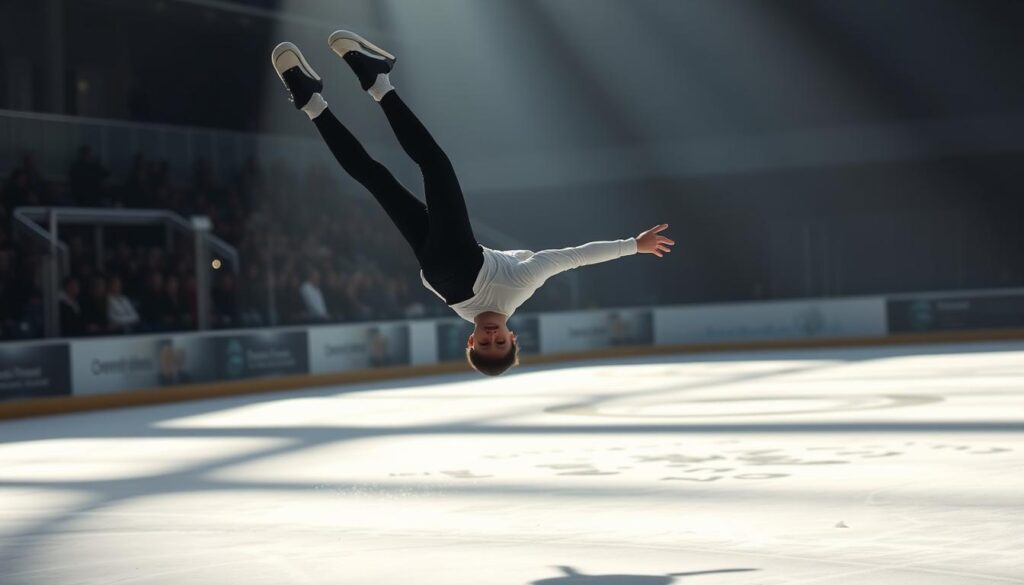
Figure skating has strict rules to keep athletes safe. Backflips are banned because they pose too many risks. They look great, but safety comes first.
To understand why backflips are banned, we must look at the challenges they pose. The main concerns are:
- Unpredictable landing surface stability
- Increased risk of catastrophic injuries
- Potential disruption of skating’s artistic integrity
Trying a backflip on ice is very tricky. The ice is slippery, making it hard to land safely. This could lead to serious injuries like head, neck, or spinal damage.
| Risk Factor | Potential Consequence |
|---|---|
| Uncontrolled Rotation | Increased Head Injury Risk |
| Ice Surface Friction | Unpredictable Landing Mechanics |
| Blade Engagement | Reduced Stability During Landing |
Adding backflips would change the sport too much. The International Skating Union (ISU) sets rules to keep figure skating true to its values. It balances athleticism with art.
Spectators might want more tricks, but the rules are there to protect athletes. They keep the sport’s essence of precision, grace, and skill intact.
The Physics Behind Backflips on Ice
Backflips on ice are banned in figure skating for good reasons. The ice’s unique properties make it hard to do such risky moves safely.
Trying a backflip on ice is very dangerous. It requires overcoming many physical challenges. Skaters face extreme risks when they try to do this complex move.
Force and Momentum Dynamics
Backflips on ice involve complex physics. Important factors include:
- Friction coefficient of ice surface
- Skater’s initial velocity
- Rotational angular momentum
- Center of gravity during rotation
Impact on Landing Surface
Landing on ice is very risky. The ice’s low friction makes it hard to control movements.
| Surface Characteristic | Impact on Backflip |
|---|---|
| Ice Friction | Reduced stability during landing |
| Surface Hardness | High risk of injury on impact |
| Thermal Conductivity | Increased slipping risk |
Risk Factors in Rotation
Rotating in a backflip is very risky. Skaters must deal with:
- Precise angular momentum control
- Exact body positioning
- Split-second timing
- Emergency recovery techniques
Professional figure skaters know backflips are dangerous. They need incredible skill and risk serious injury.
Safety Concerns and Risk Assessment

Ice skating is all about skill and precision. Backflip safety is a big challenge for athletes and sports officials. The risk of dangerous moves like backflips is high and needs careful thought.
Experts say there are many safety issues with backflips:
- Unpredictable surface conditions on ice
- Limited control during aerial rotation
- High-impact landing requirements
- Potential for catastrophic spinal injuries
Doing a backflip on ice is tough. Reduced friction and increased slipperiness make landings hard to control. Skaters must keep their body right and manage their speed well, which is hard during flips.
Figure skating puts a big focus on keeping athletes safe. Doctors and physiotherapists warn about the dangers of high-risk moves. The risk of head injuries, neck damage, and long-term brain problems is too high.
Skating groups have made rules to avoid dangerous moves. These rules help keep athletes safe and keep the sport exciting and challenging.
ISU Regulations Regarding Prohibited Moves
Figure skating has strict rules to protect athletes and keep the sport’s art alive. The International Skating Union (ISU) sets clear guidelines for what moves are allowed in competitions.
Understanding ISU rules on backflips is key. Skaters must follow these rules closely to avoid penalties.
Current Rule Framework
The ISU’s rulebook bans backflips in competitions. This rule is key to keeping the game fair and safe for athletes.
- Backflips are completely prohibited in competitive programs
- Rotational elements must follow strict technical guidelines
- Jumps are limited to specific rotation counts
Enforcement Mechanisms
Judges and technical panels watch over ISU rules closely. They use advanced video replay to check each performance carefully.
| Enforcement Method | Description |
|---|---|
| Video Replay Analysis | Detailed examination of skater’s movements |
| Technical Panel Review | Immediate assessment of possible rule breaches |
| Scoring Deductions | Immediate point cuts for banned moves |
Penalties for Violations
Trying unauthorized moves can lead to big penalties. Penalties can range from point deductions to possible disqualification, keeping rules strict.
- First-time violations result in point reductions
- Repeated infractions may lead to competition disqualification
- Persistent rule-breaking can impact future competitive opportunities
Notable Incidents Involving Backflips
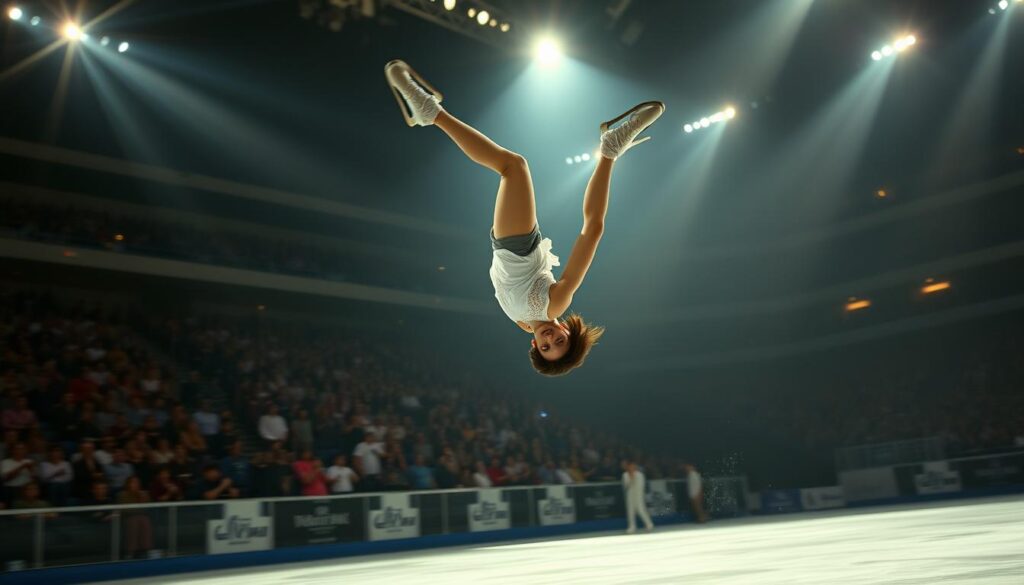
The backflip controversy in ice skating has sparked a lot of debate. It has become a big topic in the professional skating world. Many memorable moments in figure skating history involve dangerous moves that test the limits of competition rules.
One famous incident is with French figure skater Surya Bonaly. She became known for her bold approach to skating rules. At the 1998 Winter Olympics in Nagano, Japan, Bonaly did an illegal backflip. This move made her a legend in figure skating.
- Bonaly’s backflip was a direct challenge to International Skating Union (ISU) rules
- The move resulted in point deductions and possible disqualification
- Her performance showed the tension between artistic freedom and safety rules
Other notable moments include exhibition performances where skaters did backflips as a protest or artistic statement. These moments showed the complex relationship between technical innovation and competition rules.
Professional skaters have always pushed the limits of what’s allowed in competitions. The backflip is a symbol of the ongoing debate between creativity and safety in figure skating.
- Exhibition performances often show forbidden moves
- Skaters keep challenging existing rules
- The backflip is the ultimate test of skating innovation
These incidents are exciting but also highlight the need for safety in competitive skating. The backflip controversy continues to captivate both fans and professionals.
Comparing Backflips to Legal Jump Elements
Figure skating is all about mastering technical skills. It’s what makes some moves safe for competition and others too risky. Backflips, though thrilling, are not allowed because of their danger.
In competitive figure skating, there’s a fine line between risk and creativity. Backflips and axel jumps show how some moves are banned for safety reasons.
Technical Differences in Jump Mechanics
Skaters need to be very precise with their jumps. Legal jumps, like the axel, are different from banned moves like backflips.
- Axel jumps start with a forward take-off and complete a full rotation
- Backflips, on the other hand, rotate backward, making landings hard to predict
- Legal jumps keep their rotation axes controlled
Risk Level Comparative Analysis
| Jump Type | Rotation Complexity | Landing Risk | Competition Approval |
|---|---|---|---|
| Axel Jump | Controlled | Low | Approved |
| Backflip | Unpredictable | High | Prohibited |
Scoring and Risk Assessment
If backflips were allowed, they would score high because of their complexity. Technically challenging moves need careful risk assessment before they’re used in competitions.
Skaters and judges always look to improve while keeping everyone safe. They make sure performances are both thrilling and safe.
Professional Skaters’ Perspectives on the Ban
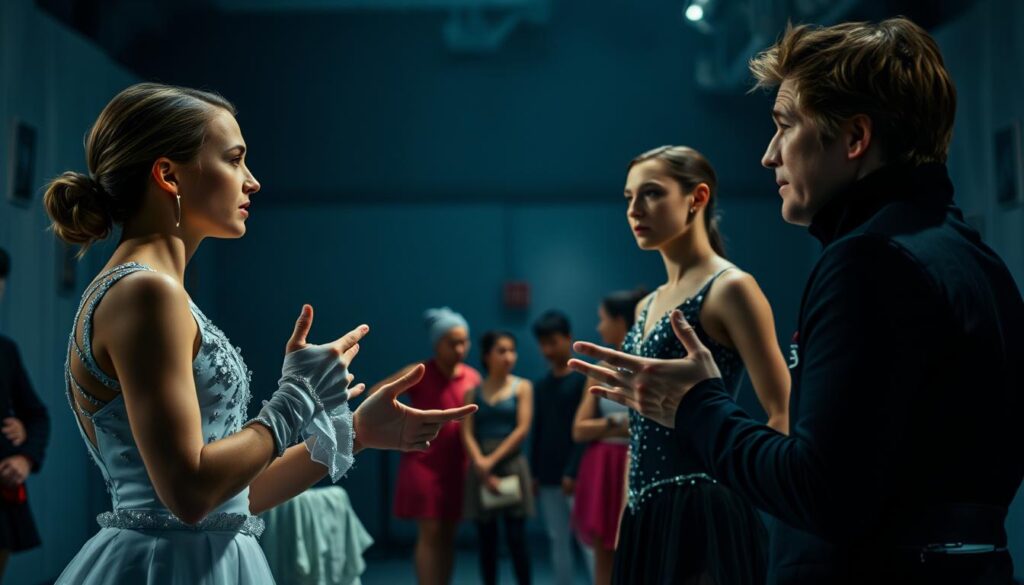
The backflip controversy in ice skating has sparked intense debates among professional athletes. Skaters have strong opinions about the ISU rules on backflips. They see a complex landscape of safety, artistic expression, and competitive innovation.
Top athletes in the figure skating world share nuanced views on the backflip ban. Some key perspectives include:
- Safety advocates who support the current restrictions
- Performance artists seeking more dynamic elements
- Technical experts analyzing risk versus spectacle
Olympic gold medalist Michelle Kwan has argued that technical limitations protect athletes. They maintain the sport’s elegant core. Younger skaters, on the other hand, push for more acrobatic freedom. They believe spectacular moves could revitalize competitive figure skating.
The debate goes beyond simple rule enforcement. Professional skaters recognize that each proposed change impacts the delicate balance between artistic performance and athletic risk. Their insights reveal a passionate commitment to preserving figure skating’s unique character.
Retired champions and current competitors alike continue to challenge existing regulations. They suggest that the conversation around backflips remains dynamic and evolving.
The Impact on Competitive Figure Skating
The backflip controversy has changed competitive figure skating a lot. Skaters and coaches now think differently about technical elements. They are pushing the limits of creativity within strict rules.
Without backflips, skaters have found new ways to innovate. They focus on making their routines more detailed and precise. This shows off their skill while following the rules.
Transforming Technical Mastery
Skaters have changed how they train to meet current rules. They now focus on:
- Precise rotational techniques
- Complex jump combinations
- Artistic expression
- Seamless choreographic transitions
Program Composition Innovations
Today’s skating programs are like stories on ice. Choreographers blend technical skill with emotional depth. This creates performances that wow both judges and fans.
The rules have made skaters more creative. They turn what could be limits into chances for amazing art and sports.
Medical Expert Opinions on Backflip Safety
Sports medicine experts have looked into the dangers of ice skating moves, like backflips. Orthopedic surgeons and sports injury specialists warn about the big medical risks of these moves.
Dr. Michael Ramsey, a top sports medicine doctor, talks about the dangers of backflip safety in ice skating. Trying complex moves on ice can lead to serious injuries.
- Spinal injury risks are high during backflip attempts
- Head trauma risk goes up with each rotation
- Landing can put a lot of stress on joints
Medical studies show why backflips are risky on ice:
- Ice surface can be unpredictable
- It’s hard to control during mid-air
- There’s little room for mistakes
The medical field strongly advises against doing backflips in ice skating. Studies show that the human body can’t always handle the forces from these moves on ice.
Research from top sports medicine journals backs the International Skating Union’s rules. By banning moves like backflips, experts want to keep athletes safe from serious injuries.
Alternative Acrobatic Elements in Modern Skating
Figure skating is always changing, with amazing performances that show off incredible skills. Skaters find new ways to wow the crowd without taking big risks like backflips.
Top skaters are always looking to break new ground with their moves. They mix art, precision, and creativity in ways that follow the rules.
Legal Spectacular Moves
Elite figure skaters have come up with some amazing moves that thrill fans and keep everyone safe:
- Biellmann spin: An extreme flexibility demonstration where skaters grab their blade behind their head
- Hydroblading: A low-to-the-ice gliding move requiring exceptional balance
- Complex aerial combinations with multiple rotations
- Intricate partner lifts in synchronized sequences
Innovation Within Rules
Modern skating is all about pushing the limits with new jump sequences and creative routines. Skaters now do quad jumps and triple Axels, showing off their incredible talent while following the rules.
These incredible shows show that you don’t need to take big risks to be amazing. Creativity and technical mastery are what make figure skating truly special.
The Future of Figure Skating Regulations
Figure skating is changing fast, with new rules and tech on the way. Advances in tech and what fans want are making the sport more exciting.
The rules on backflips might change a lot soon. Skating experts are looking into new ways to keep skaters safe and improve their skills.
- Advanced motion tracking technologies could provide more precise safety assessments
- Biomechanical research might reveal new insights into complex skating elements
- Younger generations are demanding more spectacular and dynamic performances
New rules could include:
- Enhanced safety protocols for high-risk technical elements
- More sophisticated scoring systems that reward technical innovation
- Gradual relaxation of current movement restrictions
The future of figure skating hinges on balancing athlete safety with artistic expression. Skaters and regulators are working hard to find the right balance. They want to keep the sport exciting and safe for everyone.
New tech like better protective gear and real-time analysis could lead to more daring moves. The ISU is focused on making rules that keep skaters safe while letting them show their creativity.
Insurance and Liability Considerations
Understanding ice skating rules is key. It’s not just about being good at skating. It’s also about keeping everyone safe from legal and financial problems.
Figure skating has many important things to think about:
- Legal risks from dangerous moves
- Need for good insurance
- Money worries from risky actions
Skating groups think hard about the dangers of moves like backflips. Insurance companies look at how likely injuries are and set prices based on that.
| Risk Factor | Potential Impact | Insurance Consideration |
|---|---|---|
| Backflip Complexity | High Injury Probability | Increased Premium Rates |
| Performance Location | Venue Safety Standards | Liability Coverage Limits |
| Athlete Experience | Skill Level Assessment | Risk Mitigation Strategies |
Ice skating rules focus on safety but also let skaters be creative and take risks. The mix of safety, performance, and insurance shows how complex it is to keep everyone safe in figure skating.
Rink owners, coaches, and skaters need to work together. They must have strong insurance plans. This keeps everyone safe while keeping figure skating exciting.
Conclusion
Exploring why backflips are banned in ice skating shows a mix of safety, innovation, and skill. Rules in ice skating have grown to keep athletes safe while keeping the sport’s art alive. The ban on backflips is key, blending physics, risk, and strategy.
Skaters and fans need to see these rules as more than just limits. They are detailed guidelines to protect athletes. The sport’s edge and safety are balanced, making figure skating exciting and safe.
The International Skating Union sees these rules as a way to showcase talent safely. Athletes and coaches will keep finding new ways to innovate within these rules. Even without backflips, skaters’ creativity shines through in every performance.
Whether you love skating or just enjoy watching, learning about ice skating rules is interesting. The mix of safety, skill, and creativity keeps figure skating thrilling for everyone.
